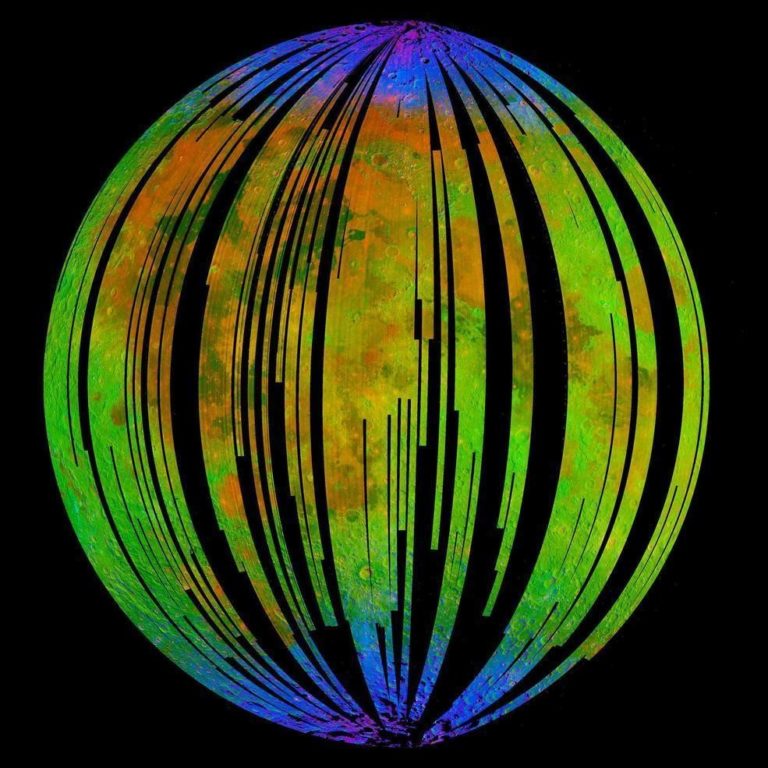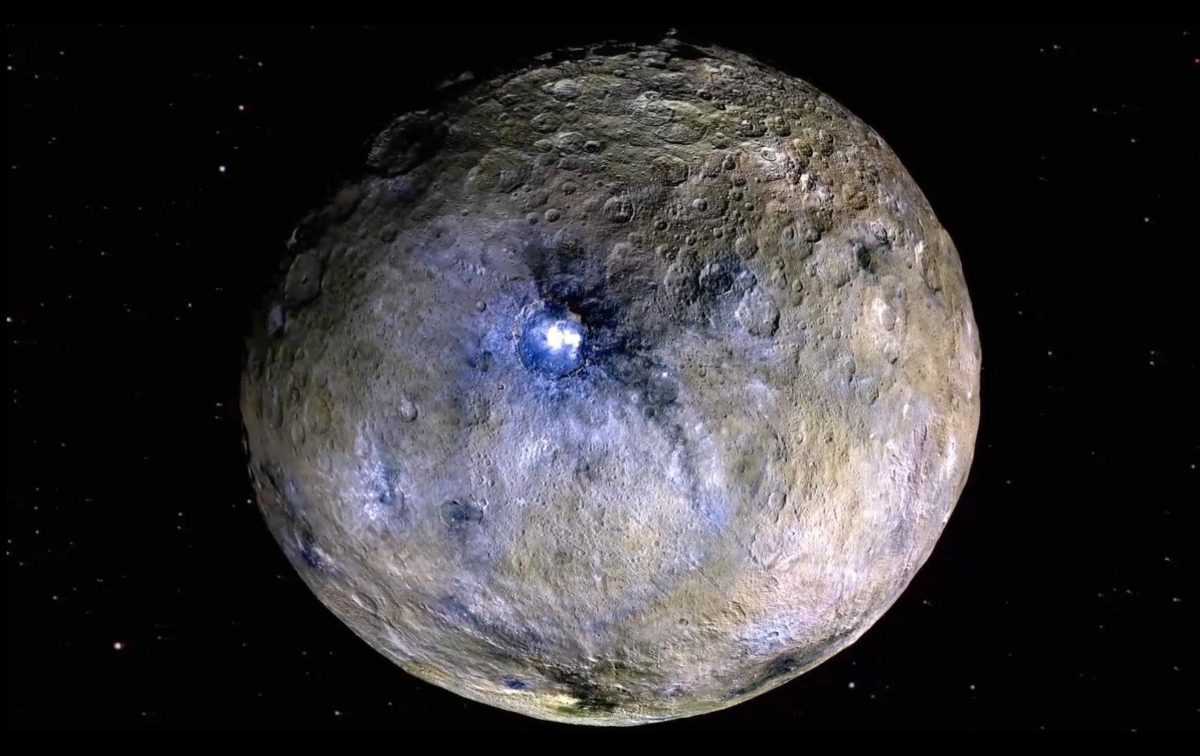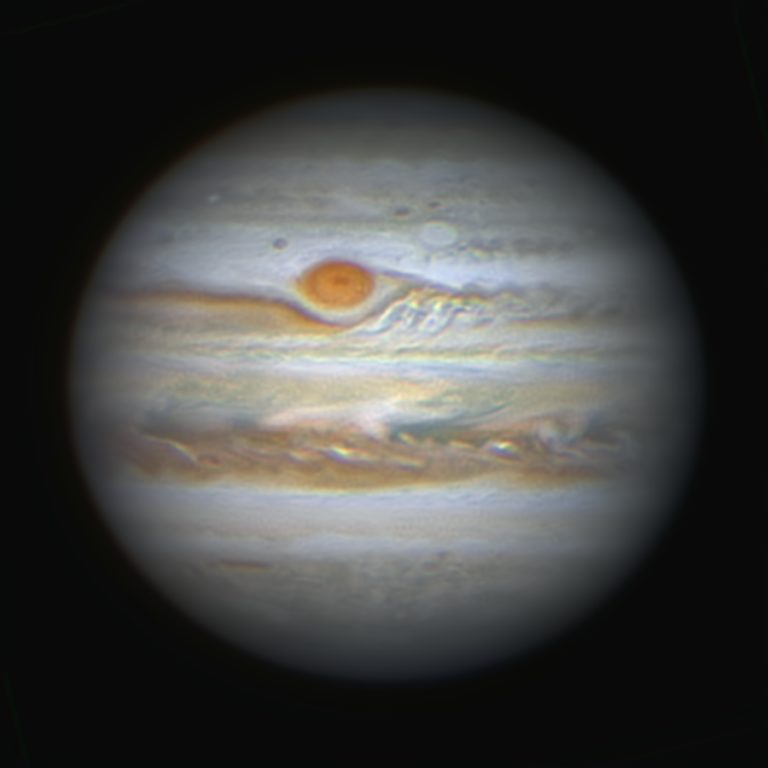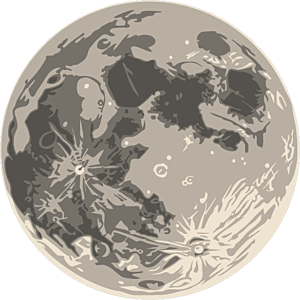The Downlink • Sep 11, 2020
What’s up (and down) in space?
Space Snapshot

NASA’s Deep Space Climate Observatory, DSCOVR, recently captured this image of sunlight glinting off high-altitude ice particles in Earth’s atmosphere. DSCOVR captures multiple full-disk images of Earth per day as part of a larger climate monitoring mission. Image credit: NASA / DSCOVR EPIC team.
You love space, now take action
This weekly newsletter is your toolkit to learn more about space, share information with your friends and family, and take direct action to support exploration. Anyone can subscribe at planetary.org/connect to receive it as a weekly email.
Mission Briefings


Scientists have found rust on the Moon using data from India’s Chandrayaan-1 spacecraft. Rust forms easily on Earth, when iron is exposed to oxygen and water. How it’s forming on the Moon isn’t known, but one guess is that oxygen escaping Earth’s atmosphere is interacting with water released from lunar rocks when meteoroids pelt the Moon’s surface. Pictured: A composite image from the Moon Mineralogy Mapper aboard the Chandrayaan-1 orbiter. The blue areas at the poles are where rust was found. Image credit: ISRO/NASA/JPL-Caltech/Brown University/USGS.

Engineers have finished reshaping and resurfacing the mirror for NASA’s Nancy Grace Roman Space Telescope. The spy satellite-operating National Reconnaissance Office gifted the mirror to NASA in 2012. Roman will hunt for dark matter and directly image exoplanets, but first it needs to be fully funded. The Trump administration has tried and failed to cancel the telescope in its last 3 budget requests; The Planetary Society in January 2020 urged Congress to keep the mission on track for a 2025 launch.

China’s Chang’e-3 lander is still returning data from the Moon 7 years after arriving in 2013. The country's state-owned media company says the spacecraft is "retired" but still in touch with Earth. Scientists recently published new findings on the rock layers beneath Chang’e-3’s landing site based on data from the mission. Learn more about why and how we study the Moon.
From The Planetary Society


Curious about the bright spots on the dwarf planet Ceres? Tune into this week’s Planetary Radio to hear all about them from former Dawn mission director Marc Rayman. Plus, Planetary Society CEO Bill Nye and COO Jennifer Vaughn join the podcast to celebrate Bill’s 10th anniversary at the helm of the organization. Pictured: Ceres as imaged by Dawn. Image credit: NASA/JPL-Caltech/UCLA/MPS/DLR/IDA.

Join us for an evening with our co-founder, Lou Friedman. Lou will share stories from his long career in space exploration drawn from his latest book, Planetary Adventures: From Moscow to Mars. This live, virtual book signing event will take place on Saturday, September 12 at 4:00 p.m. PDT / 7:00 p.m. EDT, and we’ll be taking your audience questions throughout. This event is free, but you’ll need to register as space is limited.

We each have our reason for loving space. For actor Kate Mulgrew, her passion for exploring the cosmos began with her role as Captain Janeway on Star Trek: Voyager. Her personal journey as a space explorer is a must-see.
What's Up

Jupiter is very bright in the evening southern sky, with yellowish Saturn to its left. Later in the evening, Mars rises and shines brighter than any star. In the predawn sky, you can find Venus alongside the Moon.
Wow of the Week

Does this image of Jupiter look odd to you? Taken from Australia by Planetary Society member and astrophotographer Luke Gulliver, this picture shows Jupiter as seen by inhabitants of the southern hemisphere. Space images are conventionally shown from the perspective of Earth’s northern hemisphere, with their north poles at the top of the image. Although this image may seem upside down compared to most photos of Jupiter, it’s a great reminder that there really is no “up” or “down” in space.
Do you have a suggestion for the Wow of the Week? We’re looking for space-related art, music, gadgets, quotes, fashion, burning questions, brief sci-fi passages, or anything else that will make our readers go “Wow!” Send us your idea by replying to any Downlink email or writing to [email protected], and please let us know if you’re a Planetary Society member.


 Explore Worlds
Explore Worlds Find Life
Find Life Defend Earth
Defend Earth


